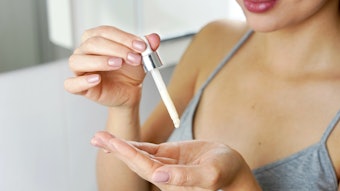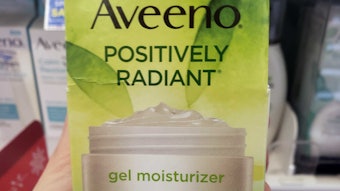
Among the top beauty ingredient trends projected for 2024, longevity (aka perpetual youth, anti-aging, well aging, etc.) is perhaps one of the oldest – however, it is being taken to new high-tech levels, as evidenced by the booming popularity of hyperbaric oxygen therapy tanks.1 Franziska Wandrey, Ph.D., head of research at Mibelle Biochemistry, recently explained:2 “Mindfulness, fitness trends and holistic wellness approaches have permeated the skin care market. This, added to scientific and medical advances in the field of longevity, has driven consumer interest in tools to optimize their lifestyles and extend their health span; i.e., the healthy period of their lives.”
Log in to view the full article
Among the top beauty ingredient trends projected for 2024, longevity (aka perpetual youth, anti-aging, well aging, etc.) is perhaps one of the oldest – however, it is being taken to new high-tech levels, as evidenced by the booming popularity of hyperbaric oxygen therapy tanks.1 Franziska Wandrey, Ph.D., head of research at Mibelle Biochemistry, recently explained:2 “Mindfulness, fitness trends and holistic wellness approaches have permeated the skin care market. This, added to scientific and medical advances in the field of longevity, has driven consumer interest in tools to optimize their lifestyles and extend their health span; i.e., the healthy period of their lives.”
New product types such as neon star patches and whipped cream mousse to make sun protection more appealing and enjoyable."
Addressing aspects of longevity from a product standpoint takes proactive and reactive approaches. For example, as previously reported,1 Aramore’s Multi-Defense Lotion, declared “skin longevity’s missing link,” pairs hyaluronic acid, niacinamide and royal tea with 20% zinc oxide to prevent damage. The result is a formulation that reportedly protects against pollution, free radicals, harsh weather conditions and UVA/UVB and blue light – all key factors in premature aging.
From a proactive protection standpoint, the market for sun care is projected to reach US $3 billion by 2031, expanding at a CAGR of 5.6% from 2021, per Transparency Market Research.3 Driving this growth are new product types such as neon star patches and whipped cream mousse to make sun protection more appealing and enjoyable. In addition, as awareness of the need for skin protection grows, demand for SPF 50+ will continue. Not surprisingly, sun care with organic and cruelty-free ingredients are in high demand, and the advent of products featuring advanced shielding technologies will push the innovation envelope.
The same source notes that alongside demand for proactive protection is the need for skin damage repair, presenting parallel – or perhaps merged – market opportunities. Indeed, a majority of consumers seek products that provide both sun protection and additional skin care benefits such as hydration and anti-aging properties. The development of antioxidants and infrared protection also contributes to the appeal of sun care products.
What other trends are emerging for sun/skin protection and defense? And what future directions are in store for this market? We asked additional industry experts to share their views; following are their insights.
Multifunctional, Microbiome-friendly, Antioxidants and Extracts
According to Kyle Landry, Ph.D., president of Delavie Sciences, “consumers are looking for products that both protect them and help to repair sun damage. [They] are also looking for alternative ingredients that are effective and safe for both them and the environment.”
He adds that the skin microbiome is another area consumers are focusing on. “The microbiome is linked to a variety of skin issues, and products that are designed to be microbiome friendly are starting [to] gain traction.”
In terms of future directions, Landry believes these drivers will lead to the development of products that tackle skin protection and repair while also defying the signs of aging and/or environmental damage. “There is a lot of potential to make versatile products,” he writes. “For example, color cosmetics or hair/scalp care can be formulated to help minimize damage from UV exposure while maintaining their main function. Multifunctional products will help streamline the consumer routine while providing benefits not widely seen in that segment.”
Enabling such multifaceted effects are a variety of antioxidants and extracts designed for multifunctional benefits, per Landry. “One such ingredient is [Delavie’s] Bacillus Lysate (INCI# 35182). This novel ingredient was developed from research aboard the International Space Station and can be added to a variety of products.”
For example, he explains that Bacillus Lysate acts as a sun protection booster, “significantly improving the SPF value of both traditional and mineral UV filter sunscreens while preventing the formation of UVA-induced free radicals.” He notes that UVA-radicals are associated with an increase in fine lines and wrinkles. In addition, the ingredient has been certified as microbiome-friendly for both the face and scalp microbiome. Per Landry, it has been incorporated in a variety of products such as shampoos, serums, lotions and sunscreens.
Bio-based SPF Boost Without White Cast
“Consumers are increasingly focused on the environmental impact of sun care products, pushing for more sustainable options,” Julia Tomasich, senior R&D engineer for Lignovations, writes. “There are growing health concerns surrounding certain UV filters commonly used in sunscreens. Additionally, there is heightened awareness of the importance of daily SPF use for overall skin health.”
According to Tomasich, customers are now scrutinizing ingredients in products and showing a preference for environmentally friendly UV filters. “However, there's also a challenge with the acceptance of mineral UV filters due to the associated white cast of non-nano filters,” she adds.
Future directions in the sun care market may involve a shift toward more sustainable and eco-friendly options, per Tomasich. “This includes the development and adoption of bio-based SPF boosters derived from renewable sources, offering effective sun protection while reducing reliance on traditional UV filters.”
She adds that innovations addressing the white cast issue associated with mineral filters could play a key role in shaping the market. “The potential lies in meeting consumer demands for products that are both effective and environmentally responsible.”
Technologies or ingredients that will enable these directions include bio-based SPF boosters from sources like lignin. Tomasich explains: “Lignin-based ingredients can increase SPF, reduce the need for traditional UV filters and address the white cast issue associated with mineral filters.” She gives the example of Lignovations’ LignoGuard ingredient (INCI: Water (Aqua) (and) Lignin (and) Pentylene Glycol), a multifunctional ingredient made from upcycled biomass.
“LignoGuard not only enhances the sustainability of sun care products but also aligns with consumer preferences for eco-friendly options,” Tomasich writes. “The incorporation of these technologies can pave the way for the development of sun care products that meet the evolving demands of environmentally conscious consumers.”
Conclusion
The multidimensional variables affecting skin aging, health and longevity, including those that are both known and unknown, afford cosmetics R&D innovators any number of potential targets – as well as market opportunities.
References
1. Gleason-Allured, J. and Smedley, P. (2023, Nov 1). 2024 Ingredient trends decoded. Cosm & Toil. Available at https://www.cosmeticsandtoiletries.com/home/article/22878036
2. Wandrey, F. (2023, Nov 10). Video: NAD+ and longevity as the latest anti-aging target. Cosm & Toil. Available at https://www.cosmeticsandtoiletries.com/multimedia/video/video/22876458
3. Transparency Market Research. (2023, Dec 14). Sun care market to be worth USD 3 billion by 2031, growing at CAGR 5.6%. Available at https://finance.yahoo.com/news/sun-care-market-worth-usd-163000565.html











